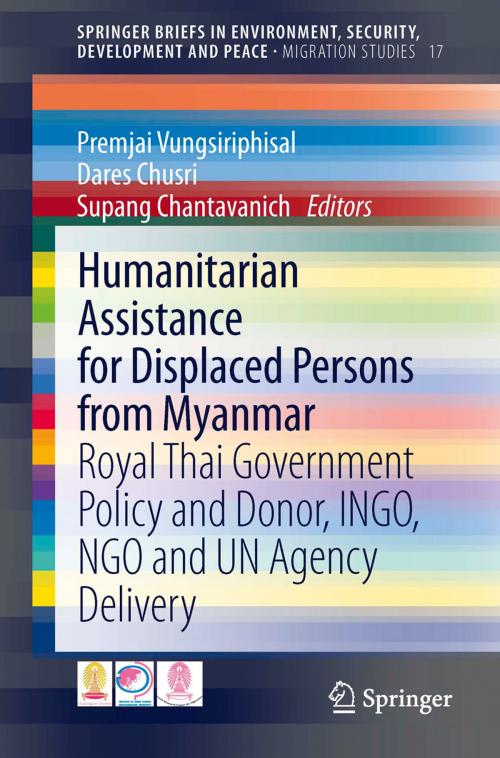Humanitarian Assistance for Displaced Persons from Myanmar
Royal Thai Government Policy and Donor, INGO, NGO and UN Agency Delivery
Nonfiction, Reference & Language, Law, Environmental, Social & Cultural Studies, Social Science, Cultural Studies, Emigration & Immigration| Author: | ISBN: | 9783319027951 | |
| Publisher: | Springer International Publishing | Publication: | November 23, 2013 |
| Imprint: | Springer | Language: | English |
| Author: | |
| ISBN: | 9783319027951 |
| Publisher: | Springer International Publishing |
| Publication: | November 23, 2013 |
| Imprint: | Springer |
| Language: | English |
This book is one of four volumes on a major empirical migration study by leading Thai migration specialists from Chulalongkorn University (Bangkok) for the United Nations Development Programme (UNDP). This volume examines the protracted refugee situation at the Thai–Myanmar border. Displaced persons are kept in closed settlements, and this has limited their self-reliance. A resettlement program has been implemented and many refugees have been accepted in resettlement countries. Repatriation is not recommended as a durable solution unless Myanmar becomes a safe place for return. Funding and intervention policies of international organizations and NGOs vary. Donors prefer to switch humanitarian assistance to development aid. The book provides realistic policy recommendations for a durable solution for refugees at the borders. Practitioners and policymakers from governments, international organizations and NGOs will benefit from its findings. The volume is also helpful for anyone studying forced migration and its denouement in the globalized age.
This book is one of four volumes on a major empirical migration study by leading Thai migration specialists from Chulalongkorn University (Bangkok) for the United Nations Development Programme (UNDP). This volume examines the protracted refugee situation at the Thai–Myanmar border. Displaced persons are kept in closed settlements, and this has limited their self-reliance. A resettlement program has been implemented and many refugees have been accepted in resettlement countries. Repatriation is not recommended as a durable solution unless Myanmar becomes a safe place for return. Funding and intervention policies of international organizations and NGOs vary. Donors prefer to switch humanitarian assistance to development aid. The book provides realistic policy recommendations for a durable solution for refugees at the borders. Practitioners and policymakers from governments, international organizations and NGOs will benefit from its findings. The volume is also helpful for anyone studying forced migration and its denouement in the globalized age.















